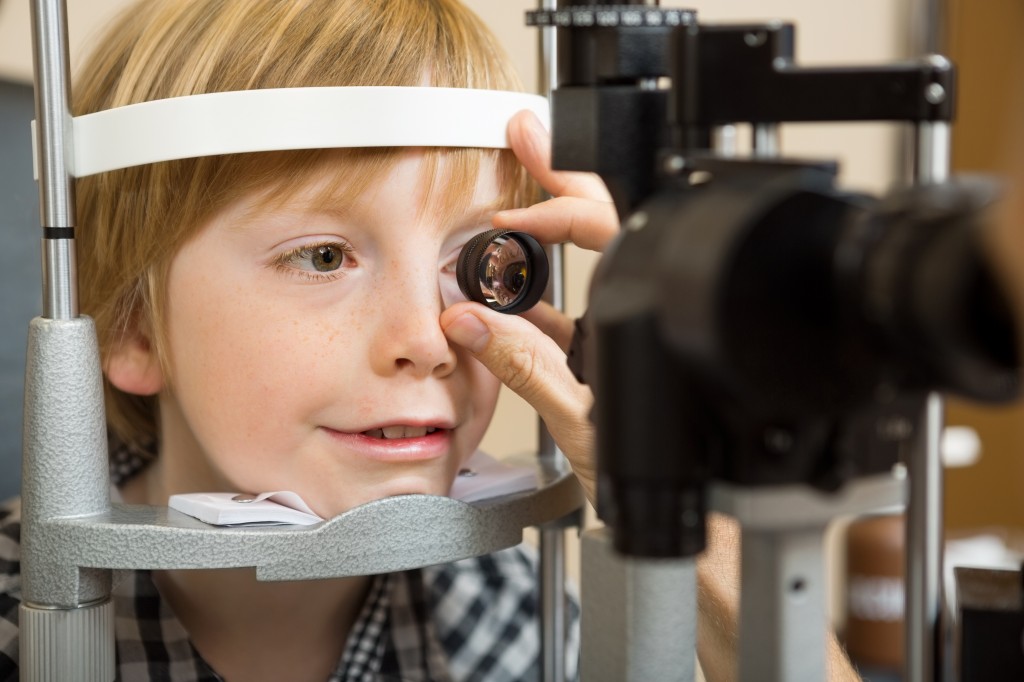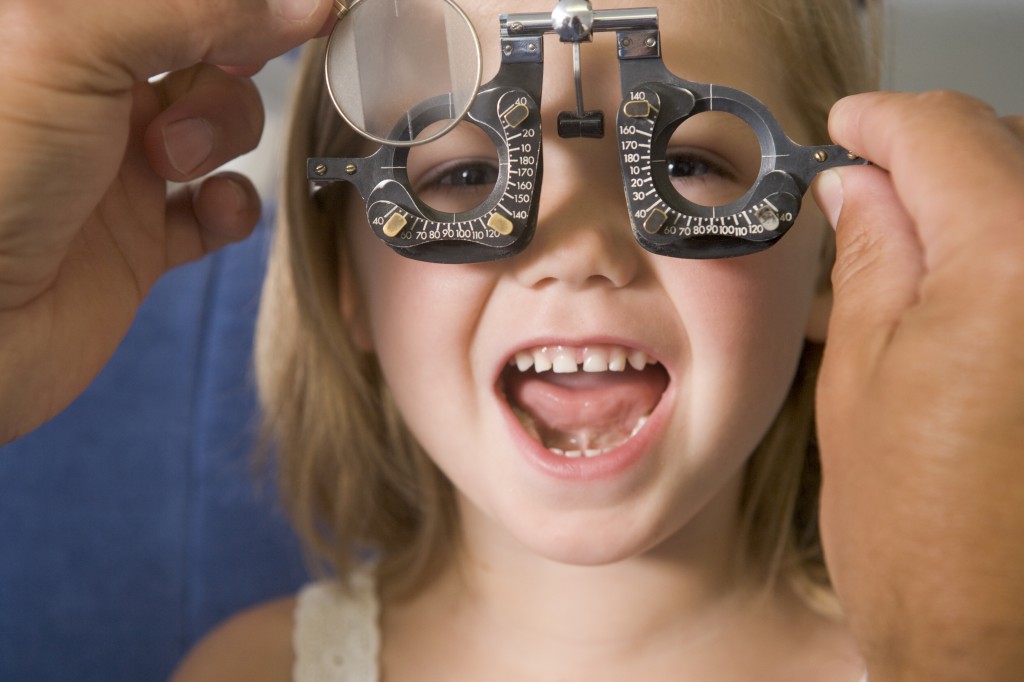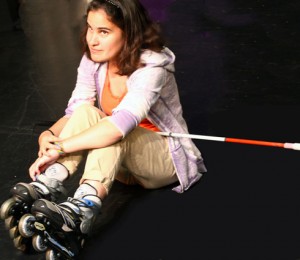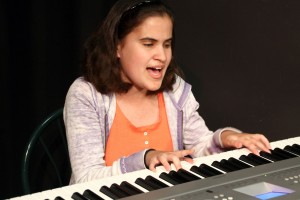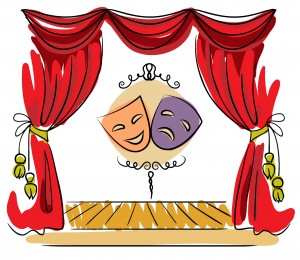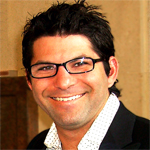8/19/14
Here is part two in Buddy Russell’s series; this one focusing on contact lenses as a treatment option for children.
We Are Not Born With Good Vision
The human visual system at birth is poorly developed, but rapidly becomes the remarkable combination of nerve tissue, muscles and optics that provide us with the sense of vision. Those babies born with “perfect” eyes have only the opportunity to develop normal vision. The information processed by the eyes is sent directly to the brain and is interpreted as vision. During the first few weeks, the child sees shapes, lines and space between objects. The child’s visible world is most usable within 8-14 inches of his/her eyes. During this time, the eyes may appear to wander. After about a month or so, the normal child’s eyes will appear more coordinated and they start to show more interest in looking at objects. It is usually in the third month that a child who has normal eyes can fix and follow on a near object. The growth of the eye is a dynamic process, influenced by genetics and the environment.
During the first few weeks, the child sees shapes, lines and space between objects. The child’s visible world is most usable within 8-14 inches of his/her eyes. During this time, the eyes may appear to wander. After about a month or so, the normal child’s eyes will appear more coordinated and they start to show more interest in looking at objects. It is usually in the third month that a child who has normal eyes can fix and follow on a near object. The growth of the eye is a dynamic process, influenced by genetics and the environment.
Early detection of any eye problem is key to treating the disorder. The prevalence of vision problems in children is higher than you might think. For example:
- 1 in 10 children are at risk from undiagnosed vision problems
- 1 in 25 will develop strabismus
- 1 in 30 will be affected by amblyopia
- 1 in 33 will show significant refractive error
- 1 in 100 will exhibit evidence of eye disease
- 1 in 20,000 children have retinoblastoma
As a result of his granddaughter and her eye problem, former President Jimmy Carter initiated a program in 2002 called InfantSEE. This program allows children to have an eye exam at a very young age at no charge to the family. Participating eye doctors provide a more thorough exam than the busy pediatrician. As a result, there is a greater opportunity to detect and treat eye disorders that may otherwise go undetected.
“Have to” Contact Lenses
Fitting pediatric patients is not usually about routine visits and patients who want to wear contact lenses. It is about critical and often urgent situations and patients who have to wear contact lenses. The more common medical indications for contact lenses can be categorized into three groups; anisometropia, irregular corneal astigmatism and “large” refractive errors.
Anisometropia
One of the more common conditions potentially leading to a permanent loss of vision in a young patient is anisometropia. This difference in the refractive errors of the two eyes can lead to suppression of the less clear image. As a result of the non-focused eye, the brain of a young patient simply turns off the blurred eye. Early detection is key to successful treatment. Following the diagnosis of this problem being present, simply correcting the refractive error may be enough. However, it has been reported that as little as one diopter difference between the two eyes corrected with spectacles and the resultant anisokonia, can lead to foveal suppression impacting stereopsis and depth perception. The use of a contact lens or contact lenses alters the effective image size due to the vertex distance being zero compared to either the magnification or minification of the image size due to the vertex distance with spectacles. One of the most severe examples of this condition would be a child with a unilateral congenital cataract and managed with spectacles postoperatively.
Irregular Corneal Astigmatism
Whether acquired or congenital, the presence of irregular corneal astigmatism of the anterior curve of the cornea is best managed with a contact lens. This condition is to be considered urgent if the patient is of a young age. The eye may forever loose the opportunity to be corrected as the resultant amblyopia develops over a short period of time. By neutralizing the corneal irregularities with a contact lens, the eye of a young child will hopefully gain enough vision improvement to avoid the potential permanent loss.
Obviously, patching the better eye may also be necessary if the treated eye’s vision is not as correctable as the unaffected eye. The length of time the child is to be patched is to be determined by the pediatric ophthalmologist or optometrist, as this area of treatment is sometimes controversial. The factors that are considered include the level of vision obtained, age of the child and the condition of the other eye.
Large Refractive Errors
The optics of spectacle correction in high powers have inherent properties that include distortion, prismatic effect and minification / magnification. For instance, the decrease in image size when one views an object through high minus spectacles may result in less vision. This decrease in image size may impact the opportunity to fully develop normal vision in a young child. The smaller image size that is due to the vertex distance of spectacles may be better managed with a contact lens that has a vertex distance of zero thus providing a larger image. This larger image size often increases best-corrected vision.
“Fitting” the Caregiver
Arguably, the most important factor with young children having a good outcome is the parents / caregivers. The technical challenges that exist in these cases are secondary to the ability the fitter must possess to effectively explain and train the person or persons that will take care of the child outside of the office. They must be your partner in the child’s treatment. They must understand the urgency of the situation, they must understand the seriousness of the problem, they must be trained to properly apply, remove and care for the lens / lenses, they must also follow any and all instructions concerning the child. Many of these parents struggle with feelings of nervousness, guilt and sadness. My strategy is to be sensitive to their feelings but not let them feel sorry for themselves too long as the clock is ticking. I provide verbal instructions, written instructions, videos, my email address and a 24-hour phone number. I welcome the caregiver to ask any question at any time. I do my best to let them know that I do care and that I want them and their child to be successful. I am tough on them. There is no good excuse not to do as I have instructed them to do.
When the child and the parent / caregiver are convinced that I am confident in my ability and they know that I do care, the partnership develops as we walk the path together. I want the child to know that they are coming to see me. I want them to know I will reward their cooperation with all phases of the visit. This positive reinforcement may be in the form of a piece of candy, a small toy or just a sticker when the child allows me to see their eye, measure their cornea or intraocular pressure or they just tell me what they can see. Kids love to please us just like they love to please their parents. Reward them for it. Whether you consider this approach bribery or positive reinforcement, it works.
 Buddy Russell, FCLSA, COMT
Buddy Russell, FCLSA, COMT
Associate, Specialty Contact Lens Service
Emory University Eye Center


